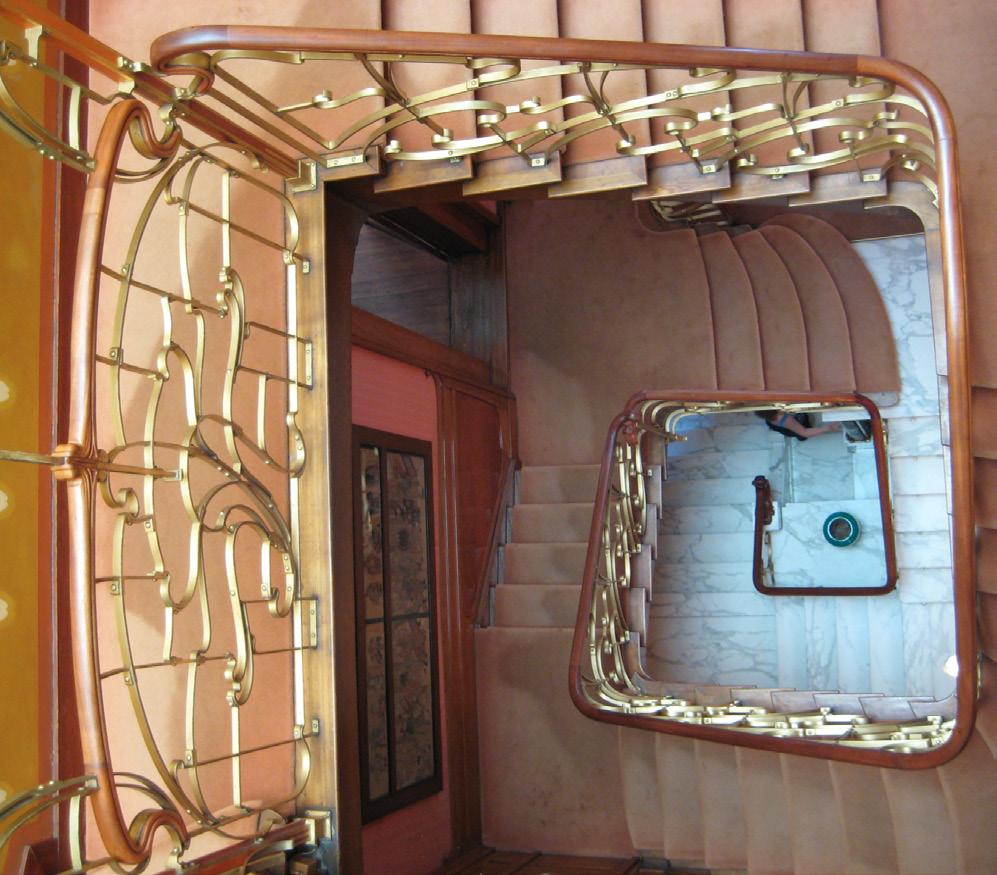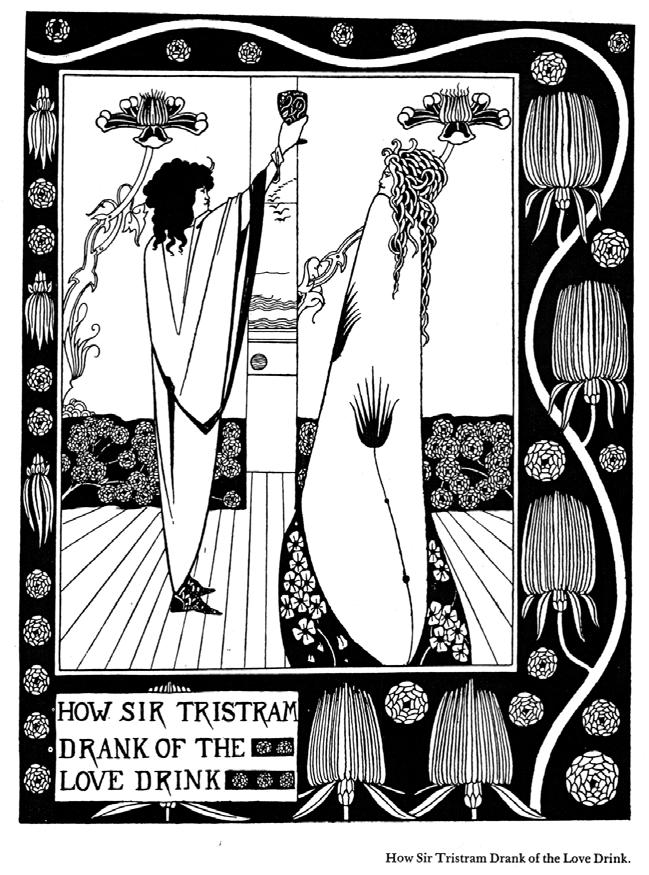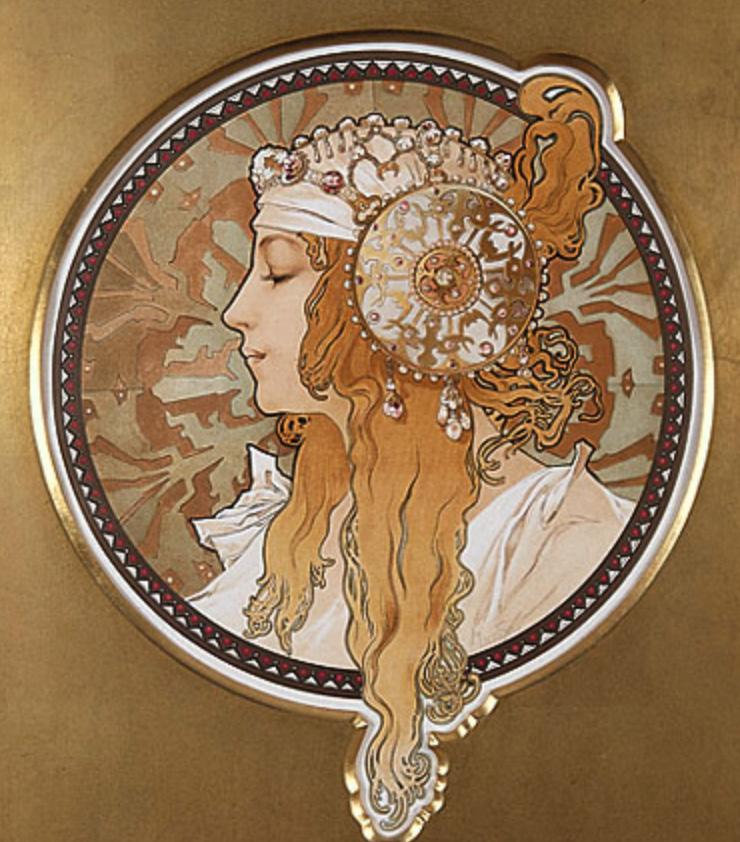
10 minute read
history
All throughout western Europe, there was a push towards a new style of art that was separated from the traditions of past movements. Art Nouveau can be seen as a reaction to traditional art styles, as many grew tired of repetitions of past works and imitations of foreign works. There had also been a push for the revival of decorative arts as the once lavish, decorative pieces of western Europe had returned to neoclassicism in the 19th century. Art Nouveau emerged as Europe was experiencing multiple technological changes due to industrialization and urbanization. The art movement was originally concerned with individuals and groups within London, Brussels, and Paris. Multiple designers had been creating innovative works, some inspired by the previous Arts and Crafts Movement.
Britain
Advertisement
In England, designers such as William Morris were some of the first proponents of the new decorative movement. William Morris was an English writer, designer, architect, and socialist, who supported the ideals of craftsmanship. He was much inspired by the previous Arts and Crafts movement, which prompted regular furniture items to be manufactured through simplistic crafting techniques. This movement was seen as a rebellion against mass production. Morris, the leader of his country’s Socialist Party, was inspired by this rebellion, as he was already highly critical of capitalism. Rather than mass production encouraged by England’s industrialization, craft designers encouraged products manufactured by individuals and small groups. Through the Arts and Crafts Movement, designers began to return to a more simplistic design process through the production of crafted pieces.
English designers had responded to both the Arts and Crafts and the Aesthetic movements, and then combined the two into Art Nouveau. The Arts and Crafts Movement called for the return
-William Morris
Art Nouveau: A design movement to craftsmanship while the Aesthetic Movement called for the term “art for art’s sake,” the idea that art only has to be beautiful. Designers would take inspiration from the luxurious ornamentalism of the Renaissance; however, the works were never truly copied. New wallpapers, prints, and fabrics were being created, mirroring organic forms while continuing to portray the basic principles of ornamentation. These new designs transformed the work of interior design. Architects begin to play a large role as well as they sometimes doubled as both architect and designer. They composed interior furnishings in order to create an ensemble of forms and colors that worked together to create the softer, calmer tones of the Art Nouveau. These architects and designers were also credited with novelties such as pastel color in design. Brighter colors such as light shades of blues and greens replaced the duller hues of greys and browns. The developments made in England were only a portion of a new movement of designers embracing the Art Nouveau. As the new style began to spread through England, it began to make its way into Belgium as well.
Brussels
Similarly to England, Belgium, especially Brussels, was undergoing a modernizing change. Brussels became a leading city with a secure middle class and a flourishing bourgeoisie. Artistic experimentation was encouraged as a rebellion against historicism and traditional artistic styles. Brussels was not holding onto tradition as tight as England was. Literary and arts magazines were published in support of the emergence of a new style. The Belgian magazine, L’art Moderne, was the first to coin the term “Art Nouveau” in order to describe a reformative group of artists looking to inspire change through their work. Along with the experimentation of artistic styles, the modernization of Brussels allowed for more middle-class families to have townhouses
built within the city. They hired architects
William Morris, “Leicester Wallpaper” (Photo: Victoria & Albert Museum)
Art Nouveau: A design movement
like Victor Horta, inspired by the stylistic innovation of Art Nouveau, to build these houses, filling the city with the Art Nouveau style.
Paris
As Art Nouveau spread through western Europe, German-French art dealer Siegfried Bing opened a shop/gallery named L’Art Nouveau in 1895. Bing was inspired by Japanese ceramics and prints and promoted this new kind of art in his gallery. The store became one of the main sellers of furniture, fabrics, wallpa-
Horta Museum, Brussels, image courtesy of J. Miers
per, and other decorative arts. L’art Nouveau also showed paintings and posters by Henri de Toulouse Lautrec and Aubrey Beardsley, two key artists of the Art Nouveau. The name and purpose of the shop was to rally up and coming artists to embrace the modernity of the new world into their work. Not long after, the shop became popular and the name L’art Nouveau and the artistic style spreading through Britain and Belgium
Beautiful Art Nouveau staircase in Riga, Latvia

became synonymous.
Art Nouveau: A design movement French architect and designer Hector Guimard was one of the first to embrace the Art Nouveau within architectural structures. After visiting the Hotel tassels in Belgium, a house embracing Art Nouveau, Guimard was inspired to embrace Art Nouveau as well. In the early 1900s he created the famous entrances to the Parisian metro stations which represented art nouveau through the curving, twisting lines and incorporation of floral motifs. These new designs were shocking to Parisians, as designs like this had not been seen in the city before.


The Paris 1900 Exposition Universelle made Art Nouveau worldwide, as thousands of visitors from all over the world came to pass through the exposition. It showcased furniture, glassware, jewelry, architecture, and other decorative objects that encapsulated the ideals of
Art Nouveau: A design movement
Aerial view of the 1900 Exposition Universelle
the design movement. The exposition exhibited the works of multiple key artists of the Art Nouveau including Alfons Mucha, Hector Guimard, and Victor Horta. It also exhibited ideals of the movement through architecture, as the buildings incorporated art nouveau iron structures and glass panels. Art Nouveau was somewhat overshadowed by the traditional Beaux-Arts style, though, as it was not yet a popular style. However, it did introduce the movement to the rest of the world and inspired other artists to adopt the more modern, new style.
Characteristics
Art Nouveau is known for its commit- from, the Art Nouveau designers had to ment to forward thinking and taking take inspiration from their surroundings. inspiration from the natural world around This is why so many of the designs of it. The style is characterized by its organ- the Art Nouveau focused on plants and ic forms and array of various strong lines. flowers. This subject matter was someThese lines may be curvy, resembling thing that had not been covered in any elegance and grace, or more linear and previous movements, representing how powerful. Art Nouveau coined the term the Art Nouveau focused on freeing whiplash line for these more forceful itself from previous, traditional styles. lines which created an S shape. This array asymmetrical lines will often resemble organic forms in nature such as flower buds, vines, and insect wings. Without “The style is characterized by its any prior artistic movements to copy organic forms and array
of various strong lines”

Graphic Design
Art Nouveau was a prominent style for the graphic arts. The use of line was very important for Art Nouveau graphics, taking importance over form, texture, and space. New printing technologies, such as lithography, helped for Art Nouveau to flourish in graphic design. Lithography is a type of printing process that treats a flat surface so that it repels ink everywhere except for the places required for printing. This permitted a mass production of vibrant posters to be
Art Nouveau: A design movement created under the style of Art Nouveau. Female figures were often included in these posters, consistently characterized by a representation of elegance and beauty, having the figures surrounded by flowers. These graphic prints were heavily influenced by the Japanese Ukiyo-e prints which incorporated similar uses of space, color, and decorative patterns. Ukiyo-e prints were also known for the capturing of everyday beauty and nature. These elements are all clearly seen in designs from the Art Nouveau.

Architecture and Interior Design
Art Nouveau also became prominent for architecture and interior design. These two forms of design completely embraced the organic, linear lines and ornamentation of the Art Nouveau. When designing columns and beams, architects and designers incorporated thick vines and winding tendrils that mirrored the forms in nature. Many buildings and structures used colorful tilework along with iron structures joined by glass panels, creating eye-catching pieces within the structures. Residential architecture was characterized by stones such as yellow limestone trimmed with wood. These approaches to architecture and design were once again, opposite of traditional architectural practices that created clear, useful structures. Characteristics of interior design for the Art Nouveau included stained glass, bronze and glass, Tiffany lamps, tiles, ornaments such as frames and clocks, and colors consisting of neutral tones paired with blues, violets and lilacs. These designs were more focused on incorporating beauty into the everyday life.

Art Nouveau: A design movement
Key artists
Alfons Mucha Victor Horta
Alfons Mucha is one of the most noto- Victor Horta is one of the most wellrious artists of the Art Nouveau. The known architects of the Art Nouveau Czech artist is famous for his features Period. The Belgian architect and of beautiful women with long hair and designer is most famously known for his flowing fabrics, surrounded by decora- 1890 design of the Tassel House, which tive motifs and vines in shades of peach and gold. In 1894, legendary actress, Sarah Bernhardt, commissioned Mucha to design a poster for her upcoming melodrama, Gismonda. The treatment of this poster was revolutionary due to its pastel palette and narrow composition, along with the use of organic forms. Mucha’s commissions of Bernhardt were revolutionary and led to many more commissions that benefited his artistic development. He would eventually begin to design purely aesthetic panels for domestic use in a series titled, “The Flowers”. This series featured beautiful women in front of decorative, botanical backgrounds. This theme of female figures in front of and surrounded by nature became a common motif throughout Art Nouveau. Mucha’s work became integral “Tetes Byzantines - Blonde” in the popularizing of the Art Nouveau by Alfons Mucha, 1897 movement as his posters were available for almost everyone to see.

Art Nouveau: A design movement is considered the first Art Nouveau house. The central staircase is the heart of this structure with green iron beams serving as a foundation. The thin posts form vines and twists that merge into the vines designed within the mosaics on the floor and the curves of the plants seen in the wallpaper. These elements are further echoed by the petal shapes seen in the chandeliers. Stained glass windows that depict pink flowers and blue waters are featured throughout the house as well. Horta’s work with the Art Nouveau provided industrial advances
“Moulin Rouge: La Goulue” by Henri de Toulouse Lautrec, 1891

Stairway of Tassel House, Brussels, image courtesy of Henry Townsend

Art Nouveau: A design movement with iron and glass, influencing the decorative elements of architecture.
Henri de Toulouse Lautrec
Henri de Toulouse Lautrec was most well-known for his developments of modern printmaking in the late 19th century. The French artist originally studied drawing and painting throughout his earlier career. As Paris was modernizing, however, Lautrec became the primary poster designer for the new night life that the city was experiencing. The composition and style of his posters greatly




